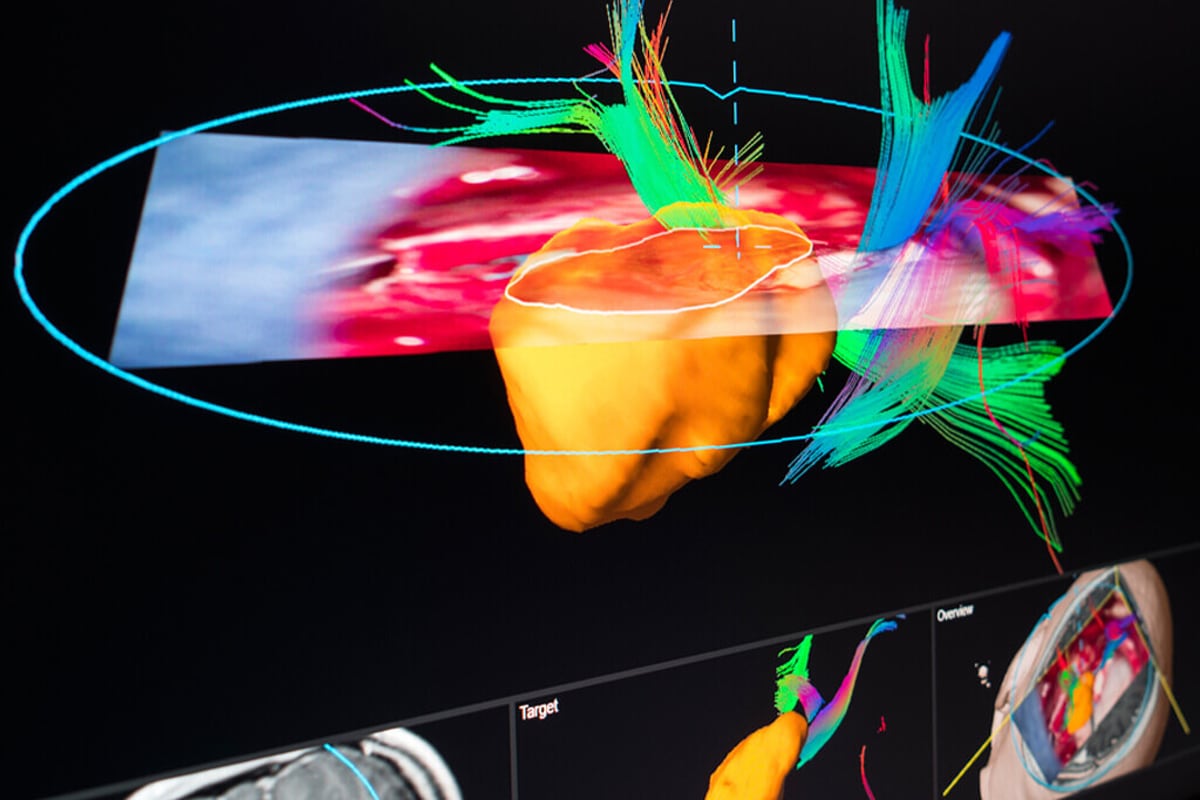
Digital Health: How Brainlab Is Building a “GPS for the Human Body”
Finding your way is hard enough when you know where you’re going. For surgeons it’s more complicated: All that they can typically rely on is general information about the human anatomy, along with specific examination results of a patient. Imagine how much more precisely they could work if they had a digital guidance system assisting them.

Stefan Vilsmeier originally created Brainlab to support neurosurgeons performing brain surgery by providing detailed 3D image models of a patient’s anatomy. Over the course of 30 years, his Munich-based company has grown into an internationally renowned pioneer of precision medicine. We spoke with Vilsmeier ahead of DLD20 about Brainlab’s ambitions to create an open digital health platform that can help European companies compete worldwide – and will ideally enable personalized, more affordable healthcare “for people around the globe”.
What’s the most exciting development in digital health?
There are a number of technologies that have emerged over the past decade, including AI, cloud computing, augmented reality, and robotics. Taken together, they mean that the entire medical industry is at an inflection point. We can now truly fulfill the promise of better healthcare through technology.
At Brainlab, we have essentially created something like a Google Maps of the human anatomy. We’re building anatomical digital models of patients by aggregating data from different sources – computer tomography, MRI scans, various examination results for the same patient over time. In those datasets, we can assign every pixel to a unique anatomical address.
For what purpose?
The immediate benefit of the anatomical mapping is that we have a much better visualization and therefore better understanding of the body. The different layers of the anatomy are like different layers of an onion, and similar to what you see as illustrations in an anatomy textbook, you can digitally “peel off” the different layers and look inside the body – for example to simulate the best approach for a surgical procedure. And by aggregating data from multiple procedures we are able to build statistical knowledge that you can then combine with individual data.

Stefan Vilsmeier
Founder & CEO, Brainlab
“Right now a lot of treatment concepts are overly simplistic. They are based on a ‘one size fits all’ approach, with very little customization.”
Can statistics really tell you that much about different patients?
Yes, because by comparing a large number of digital models – with precise information for each pixel – we can look at a tumor, for example, and say: How likely is it that a particular part of the tissue can be safely removed? And where could be a functional area in this spot that requires taking additional precautions? Right now a lot of treatment concepts are overly simplistic. They are based on, more or less, a “one size fits all” approach, with very little customization. But with sufficient data, we’re able to start personalizing the treatment for every patient and come up with a specific risk profile that allows you to pick the best treatment for every person individually.
Much of this may sound like science-fiction to many people. How can you build a complete image of a patient from local examinations, such as an X-ray of the chest or an MRT of a knee?
We do require scans of several body parts, of course. Each scan, each method of examination, has specific levels of detail. At the same time we also generate a lot of data from multiple patients that we can use to correlate with other information. This way, the software knows what structures are next to each other and what is above, below, left and right of a part of the body. Based on the information that’s directly available, the system uses aggregated knowledge – including patient-to-patient variability from other sources – to build a more complete picture of the patient. And the more scans you get over time, the better your individual model becomes.

High-tech in the operating room: Displays show 3D images of the patient’s body for reference. To prepare, specialists can even plan difficult operations wearing mixed-reality glasses, enabling them to walk each other through the procedure in the virtual world. (Photo: Brainlab)
How does this help surgeons perform an operation?
Having an accurate digital model of a patient’s anatomy means we can turn our system into a kind of GPS system for the human body. That allows us to navigate surgical instruments through small openings in the body with higher precision and less collateral damage – for example if you need to remove a brain tumor or when you want to target a lung tumor with a radiation beam. There’s a whole range of applications that require precise tracking and where our system brings clear benefits.

Stefan Vilsmeier
Founder & CEO, Brainlab
“Surgery is one of the few platform topics that has not yet been taken over by Chinese or American technology giants.”
How can your technology improve digital medicine in general?
We are now starting to take our core technology and develop it into an open platform, a kind of operating system of surgery that’s open to other companies as well. Instead of us developing every application on our own, we will enable partners, but also competitors, to build their own useful tools and applications on the Brainlab framework. This way, our hope is that a few years from now all kinds of procedures will benefit from our technology.
What are you adding with Brainlab to address a bigger issue for society?
The platform that we’re building will be safe and secure from a patient’s point-of-view. We put the patient front and center, so the patient will be able to control who is using the data in what way. Europeans are probably more sensitive to data usage, and that’s a very good thing. We see it as an opportunity for companies here.
Surgery is one of the few platform topics that has not yet been taken over by Chinese or American technology giants. Our goal is really to provide a broadly accessible platform that will drive innovation and will invite everybody to participate in order to provide patients around the globe with access to better and affordable healthcare.
More About Biotechnology

Digital Health: Technology’s Next Frontiers


